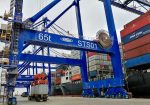Namibia’s private sector is adopting a measured approach to borrowing, opting to prioritize financial prudence over aggressive expansion, even as macroeconomic conditions show tentative signs of improvement. According to the latest Private Sector Credit Extension (PSCE) data from Simonis Storm, corporate credit growth moderated to 5.9% year-on-year (y/y) in February 2025, down from 6.1% in January, underscoring a broader trend of caution among businesses navigating a complex economic landscape. While liquidity remains ample and policy reforms aim to stimulate investment, firms are balancing debt accumulation with robust cash flow management, signalling a preference for stability in uncertain times.
A Delicate Balance: Growth Meets Restraint
The slowdown in corporate credit uptake reflects sector-specific challenges and shifting priorities. Key industries such as manufacturing, mining, and fishing—traditionally heavy borrowers—have scaled back new loan applications, instead channelling resources toward debt repayments. This trend is evident in the sharp deceleration of “other loans and advances,” which plummeted from 15.1% y/y growth in January to 9.6% in February. Meanwhile, mortgage credit in the corporate space remained stagnant at 0.2% y/y, highlighting persistent hesitancy in long-term property investments.
Despite these headwinds, pockets of resilience endure. Instalment and leasing credit, crucial for capital expenditure, expanded by 20.4% y/y, driven by demand in transportation and equipment upgrades. Overdraft facilities also inched into positive territory (0.3% y/y), suggesting firms are cautiously leveraging short-term liquidity to manage operational needs. “Businesses are walking a tightrope,” noted a Simonis Storm analyst. “They recognize opportunities in sectors like agriculture and renewables but are mitigating risks by avoiding over-leverage.”
Policy Tailwinds Meet Structural Hurdles
Recent policy interventions, including a corporate tax cut from 32% to 30% and favorable rainfall forecasts for Namibia’s agricultural heartlands, have yet to translate into a credit surge. While these measures are expected to bolster sentiment, structural issues—such as global supply chain disruptions and elevated interest rates—continue to temper enthusiasm. The Bank of Namibia’s decision to hold the repo rate steady at 6.75% reflects a balancing act between supporting growth and containing inflation, which edged up to 3.6% y/y in February due to rising food and transport costs.
For households, the credit landscape remains bleak. Household debt growth flatlined at 2.6% y/y, with mortgage loans barely recovering to 0.7% y/y and overdrafts contracting sharply (-13.2% y/y). High unemployment, stagnant wages, and soaring living expenses have forced consumers to prioritize deleveraging over discretionary spending. “The divide between corporate and household credit is stark,” said a Windhoek-based economist. “Businesses have room to maneuver, but families are financially paralyzed.”
Liquidity Abundance vs. Risk Aversion
Paradoxically, Namibia’s banking sector is flush with liquidity, averaging N$9.9 billion in February—up from N$8.5 billion in January—thanks to government expenditure and social grant disbursements. International reserves also rose marginally to N$64.4 billion, providing a buffer against external shocks. However, this liquidity has not fully permeated the credit market. “Banks are ready to lend, but risk appetite among borrowers is subdued,” explained a commercial bank executive. “Companies are opting for internal financing or phased investments rather than taking on new debt.”
The caution is particularly pronounced in sectors exposed to global volatility. Mining firms, for instance, are deferring expansion plans amid fluctuating commodity prices, while manufacturers grapple with rising input costs linked to a weaker Rand and renewed U.S. trade tariffs. Even agriculture, buoyed by promising rainfall, faces hurdles such as delayed equipment imports and labor shortages.
Looking Ahead: Cautious Optimism
Despite near-term hesitancy, analysts project a gradual rebound in corporate credit demand later in 2025. The corporate tax reduction, coupled with anticipated interest rate cuts by the South African Reserve Bank (SARB), could reduce borrowing costs and spur investment. Agriculture, a linchpin of Namibia’s economy, is poised to benefit from improved weather conditions, potentially driving demand for farm machinery and processing infrastructure.
Households, however, face a longer road to recovery. With real incomes eroded by inflation and fiscal drag—stemming from delayed adjustments to personal income tax brackets—many families may resort to unsecured credit to meet basic needs. “The risk is a two-speed economy,” warned a financial advisor. “Businesses might inch forward, but households could fall further behind, perpetuating inequality.”
A Prudent Path Forward
Namibia’s corporate sector appears to have internalized the lessons of past economic cycles, favouring stability over speculation. While this cautious approach may delay short-term growth, it could fortify businesses against future shocks. As global uncertainties persist—from trade tensions to climate pressures—the emphasis on prudent debt management may prove to be a strategic advantage.
For now, the message from boardrooms is clear: growth will be steady, not swift. In a world of volatility, Namibia’s businesses are choosing resilience over recklessness, ensuring they remain standing even as the economic winds shift.










